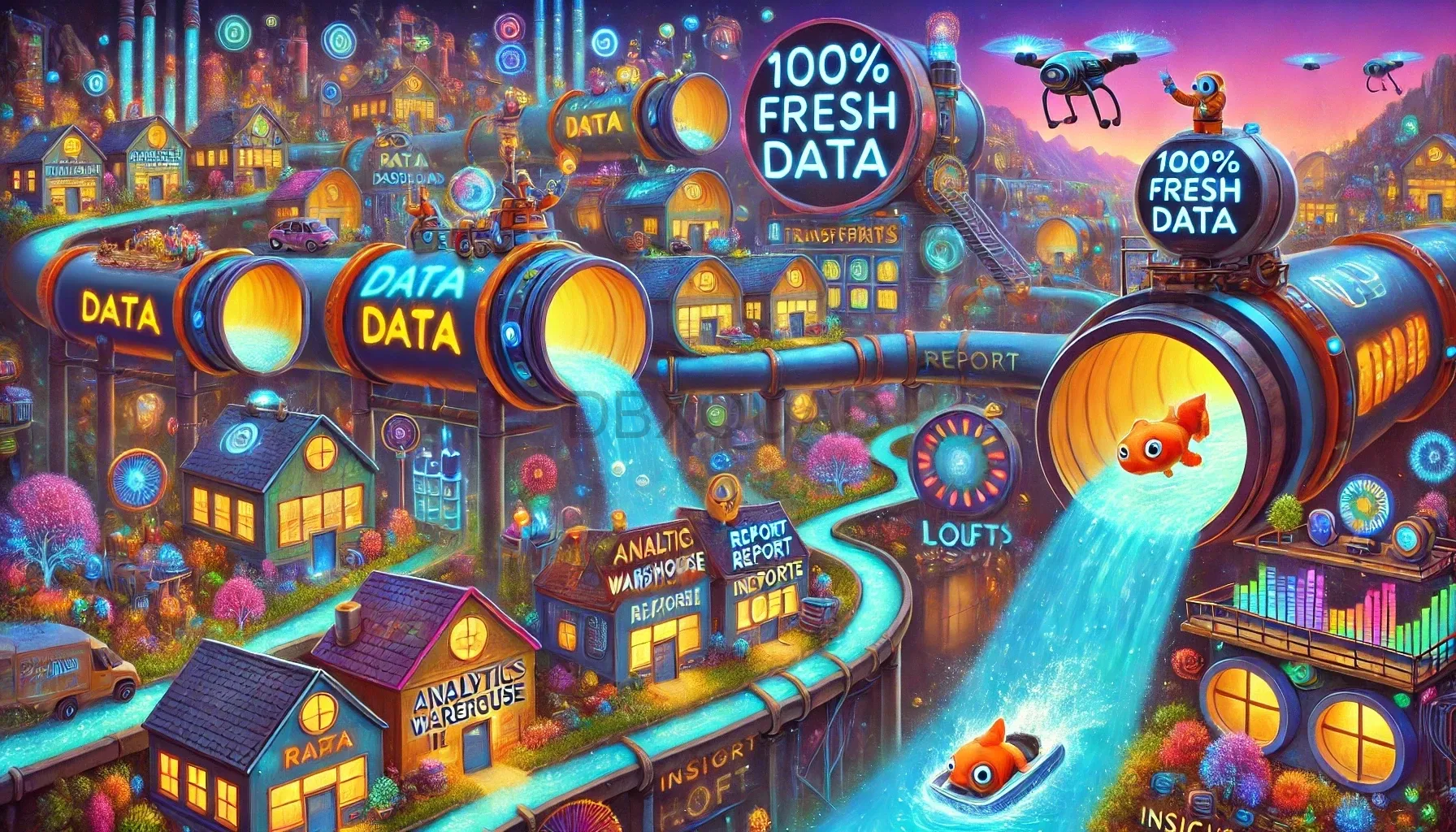Learn how data moves between systems and how to create reliable data pipelines.
Imagine you’re building a water pipeline that carries fresh water from a reservoir to your home. Now, imagine the water is data, and instead of pipes, we use technology to get the data from one place to another. That’s basically what a data pipeline is! It moves data between systems, making sure it flows smoothly, reliably, and with no leaks. Let’s break it down so it’s as simple as a relaxing weekend morning.
What Is a Data Pipeline?
A data pipeline is a system that takes data from one place and delivers it to another. It’s like building a highway for data to travel from point A to point B without getting lost. Data pipelines automate the flow of data from various sources, such as databases, APIs, or even social media feeds, to a destination where it can be used, like a data warehouse or a dashboard. Unlike ETL, which focuses on transforming data, data pipelines emphasise moving and orchestrating data smoothly across systems.
Types of Data Pipelines
Data pipelines aren’t just about ETL. There are several types, each serving different purposes:
- Batch Pipelines: These pipelines move data in chunks at scheduled intervals, like taking all the day’s orders from an online shop and moving them to a warehouse every night.
- Real-Time Pipelines: These pipelines move data continuously, almost as soon as it’s created. Imagine sending messages in a group chat—everyone sees them instantly. Real-time pipelines are used when up-to-the-minute information is needed.
- Streaming Pipelines: Similar to real-time, but handling larger amounts of data that need to be processed as they flow in. Think of streaming services, where the data (your favourite shows) is delivered as you watch.
Key Differences from ETL
While ETL is a type of data pipeline, not all data pipelines are ETL. Here’s what makes data pipelines stand out:
- Broader Scope: Data pipelines can involve moving raw data without transformation or replicating data between databases.
- Orchestration: Data pipelines often involve multiple steps and require orchestration tools to manage dependencies. Tools like Apache Airflow ensure each part plays its role at the right time.
- Flexibility: Data pipelines can handle ELT, direct data transfers, and data streaming. They’re like the versatile all-rounder on a sports team.
How Does a Data Pipeline Work?
Let’s imagine a data pipeline is like preparing dinner. Here’s how it works:
- Ingredients Gathering (Data Extraction): First, you gather all the ingredients you need. In a data pipeline, this step involves collecting data from different sources, like databases or social media.
- Chopping and Cooking (Data Transformation, if needed): Next, you clean, chop, and cook the ingredients. This is the transformation stage, where raw data is cleaned and formatted. Note that not all data pipelines require transformation—sometimes you just need to move the data as-is.
- Serving the Dish (Data Loading): Finally, you serve the meal. In data terms, this means loading the data into its final destination, like a data warehouse or business intelligence tool.
Key Components of a Data Pipeline
- Sources: Where your data comes from—databases, files, or even APIs.
- Processing Units: These are like the chefs in the kitchen. Tools like Apache Spark or AWS Glue transform and prepare the data.
- Destinations: This is where the data ends up—data warehouses, dashboards, or other systems where people can make sense of it.
- Orchestration: Orchestration tools, like Apache Airflow, make sure every step happens in the right order.
Building a Reliable Data Pipeline
- Plan Your Route: Decide where your data is coming from and where it needs to go. Understand your data sources and destinations clearly.
- Keep It Clean: Clean data is happy data. Make sure your pipeline includes steps to clean and transform data so it’s accurate and useful.
- Monitor the Flow: Monitor your data pipeline to ensure everything is flowing as expected. Tools like Datadog or AWS CloudWatch can help keep everything running smoothly.
- Automate and Test: Automate as much as possible and always test your pipeline before letting it run live. It’s like running a taste test before serving your new dish.
Final Thoughts
Data pipelines are the behind-the-scenes champions of the data world, ensuring data moves seamlessly from one place to another, ready to be used for insights. Unlike ETL, which focuses mainly on transforming data, data pipelines handle the entire journey—from extraction to movement and integration.
Whether it’s moving data from databases to dashboards or making sure your favourite app knows your preferences, data pipelines make it all possible. Think of them as the plumbing of the data world—keeping everything flowing smoothly, without any leaks or blockages.
